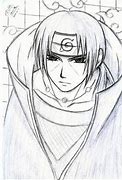
货币问答:之前的英语
知识点
 姬志真
姬志真
中译英:我之前一直是这样做的英语怎么说
我之前一直是这样做_有道翻译翻译结果:I always did this beforebefore_有道词典before英 [bɪ'fɔː]美 [bɪ'fɔr]prep. 在…之前,先于conj. 在…以前;在…之前adv. 以前;在前Before 之前,之,赛前Before Class 上课前,课前,上课之前Before service 售前服务,售前办事
展开

收起

 崂山
崂山
在 之前的英语怎么说
你好!在 之前before...本回答被网友采纳
展开

收起

 人间蒸发
人间蒸发
求英语地点之前的介词的各种用法
at ,in, on, to,for at (1)表示在小地方; (2)表示“在……附近,旁边” in (1)表示 在大地方; (2)表示“在…范围之内”。 on 表示毗邻,接壤,“在……上面”。 to 表示在……范围外,不强调是否接壤;或“到……” 2)above, over, on 在……上 above 指在……上方,不强调是否垂直,与 below相对; over指垂直的上方,与under相对,但over与物体有一定的空间,不直接接触。 on表示某物体上面并与之接触。 The bird is flying above my head. There is a bridge over the river. He put his watch on the desk. 3)below, under 在……下面 under表示在…正下方 below表示在……下,不一定在正下方 There is a cat under the table. Please write your name below the line. 4)in front [frant]of, in the front of在……前面 in front of…意思是“在……前面”,指甲物在乙物之前,两者互不包括;其反义词是behind(在……的后面)。 There are some flowers in front of the house.(房子前面有些花卉。) in the front of 意思是“在…..的前部”,即甲物在乙物的内部.反义词是at the back of…(在……范围内的后部)。 There is a blackboard in the front of our classroom. 我们的教室前边有一块黑板。 Our teacher stands in the front of the classroom. 我们的老师站在教室前.(老师在教室里) 5)beside,behind beside 表示在……旁边 behind 表示在……后面[编辑本段]2.表示时间的介词 1)in , on,at 在……时 in表示较长时间,如世纪、朝代、时代、年、季节、月及一般(非特指)的早、中、晚等。 如 in the 20th century, in the 1950s, in 1989, in summer, in January, in the morning, in one’s life , in one’s thirties等。 on表示具体某一天及其早、中、晚。 如on May 1st, on Monday, on New Year’s Day, on a cold night in January, on a fine morning, on Sunday afternoon等。 at表示某一时刻或较短暂的时间,或泛指圣诞节,复活节等。 如at 3:20, at this time of year, at the beginning of, at the end of …, at the age of …, at Christmas, at night, at noon, at this moment等。 注意:在last, next, this, that, some, every 等词之前一律不用介词。如:We meet every day. 2)in, after 在……之后 “in +段时间”表示将来的一段时间以后; “after+段时间”表示过去的一段时间以后; “after+将来点时间”表示将来的某一时刻以后。 3)from, since 自从…… from仅说明什么时候开始,不说明某动作或情况持续多久; since表示某动作或情况持续至说话时刻,通常与完成时连用。 4)after, behind 在……之后 after主要用于表示时间; behind主要用于表示位置。 时间名词前介词用法口诀 年前周前要用in 具体日子却要禁 遇到几号要用on 上午下午又是in 要说某日上下午 用on换in记清楚 午夜黄昏用at 黎明用它也不错 at用在时分前 说“差”可要用上to 说"过''要用past[编辑本段]3.表运动方向的介词: across, through 通过,穿过 across表示横过,即从物体表面通过,与on有关; through穿过,即从物体内部穿过,与in有关。[编辑本段]4.表示“在……之间”的介词: between, among between指在两个人或两个事物之间; among指在三个或三个以上的人或事物之间。
展开

收起

 雷薄
雷薄
之前的事了。英语怎么说
这句话有一个很简单一个成语,what is done is done.如果你看纳尼亚传奇第一部,好像是在开头出现的。意思是过去的就让他过去吧,意思跟你的一样。
展开

收起

 长狄洞
长狄洞
居住在很早的之前的人们 用英语怎么说?
people who lived in ancient times
展开

收起

 玉艳香温
玉艳香温
用英语怎么说我之前订的位子在哪里
直接跟服务生说:I have a reservation / I have reserved a table in advance.一般高级餐厅会询问你名字或者预约的号码,然后很礼貌地带你过去本回答被网友采纳
展开

收起

 杨阜
杨阜
上个月之前的一个月 英语怎么说?
the month before last month
展开

收起

 万树梅花
万树梅花
请按照之前说好的价格 英语
Please trade with me at the price that we agreed on before. 因为你给的句子内容不完整,我给你加了做买卖的意思。 翻译为 请按照以前我们说好的价格和我做买卖。本回答被网友采纳
展开

收起

 密音环
密音环
上个月之前的一个月英语怎么说
上个月之前的一个月A month before last month 月 [词典] month; moon; Luna; [例句]一年分为12个月。The year is divided into twelve months.
展开

收起

查看更多答案

收起


